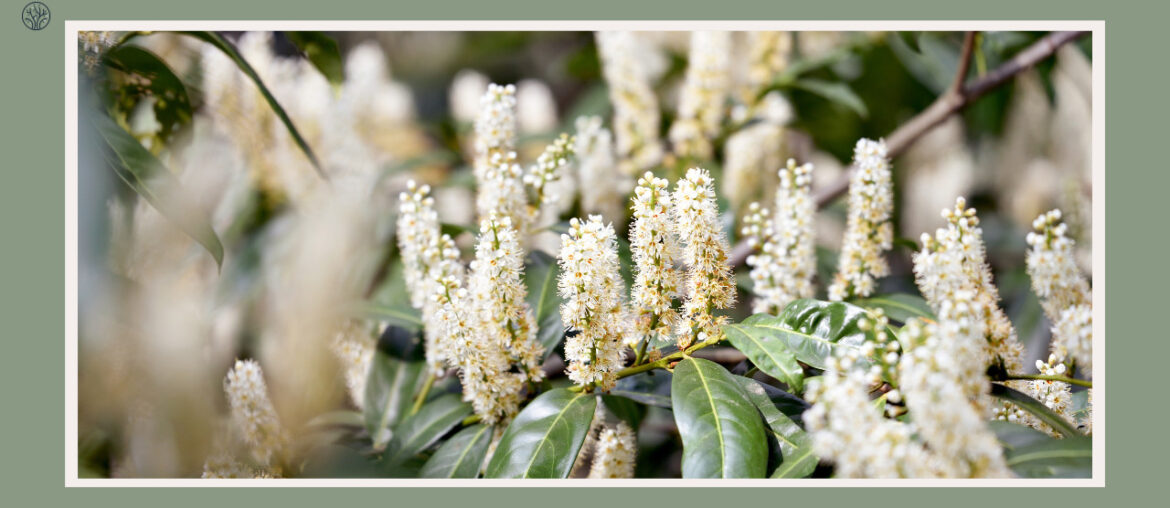California is home to a rich variety of plants that add beauty and value to our environment. However, you should remember that not all of them are harmless. Some can pose health risks upon contact, ingestion, or inhalation. That’s why it’s important to know how to recognize and avoid these poisonous plants when we explore the natural wonders of the Golden State. In this article, we will introduce you to 15 poisonous plants in California and how to stay safe from them.
- 1. Castor Bean (Ricinus communis)
- 2. Death Camas (Zigadenus spp.)
- 3. Cherry Laurel (Prunus laurocerasus)
- 4. Firestick Plant (Euphorbia tirucalli)
- 5. Jimsonweed (Datura stramonium)
- 6. Poison Hemlock (Conium maculatum)
- 7. Oleander (Nerium oleander)
- 8. Fool’s Parsley (Aethusa cynapium)
- 9. English Yew (Taxus baccata)
- 10. Angel’s Trumpet (Brugmansia)
- 11. Death Cap (Amanita phalloides)
- 12. Dumb Cane (Dieffenbachia)
- 13. Poison Oak (Toxicodendron diversiloba)
- 14. Stinging Nettle (Urtica dioica)
- 15. Tobacco (Nicotiana)
- About Plant Poisoning
- FAQs
Key takeaways
- Symptoms of Plant Poisoning: Be aware of symptoms like stomach upset, skin irritation, dizziness, breathing challenges, and heart irregularities, as these can indicate plant poisoning.
- Responding to Plant Poisoning: If contact occurs, wash the area with soap and water. For ingestion, rinse the mouth and seek immediate medical attention. Do not induce vomiting unless directed by a healthcare professional.
- Preventing Plant Poisoning: Familiarize yourself with local poisonous plants. Exercise caution in gardens and wild areas, especially with children and pets. Use gloves for plant handling and avoid eating wild plants unless you’re certain of their safety.
1. Castor Bean (Ricinus communis)
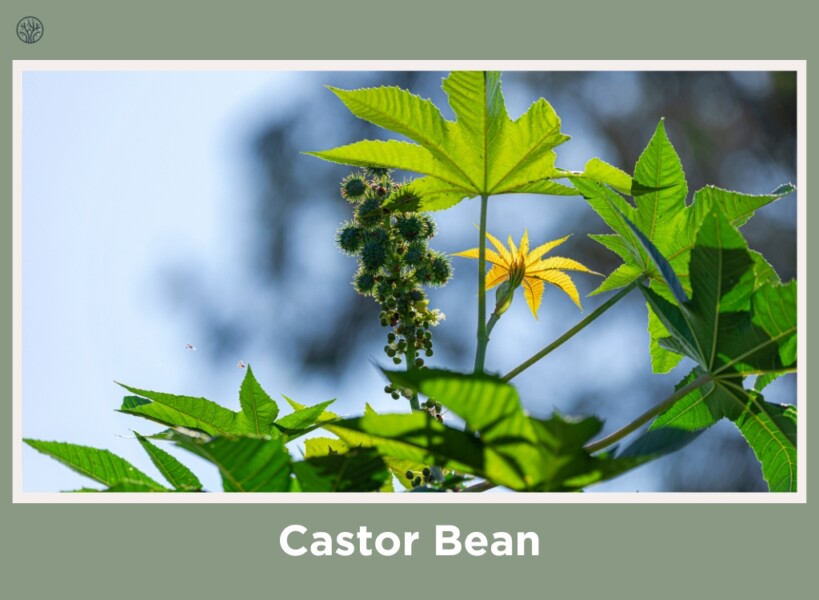
- Identification: Castor Bean has large, weed-like leaves that have a glossy texture and can grow up to 2 feet long. The most distinctive feature is its spiky seed pods.
- Habitat: These poisonous plants thrive in warm climates and grow well in gardens, along riverbanks, and in waste areas across California.
- Toxic Parts: All parts of the Castor Bean plant are toxic, but the seeds are the most dangerous. They contain ricin, a potent toxin that can be lethal even in small amounts.
- Symptoms: Ingesting the seeds can lead to severe symptoms, including abdominal pain, vomiting, diarrhea, and in severe cases, seizures, irregular heartbeat, and collapse. If the toxin is inhaled or enters the bloodstream, it can cause severe dehydration, low blood pressure, and organ failure.
- First Aid: If contact with the Castor Bean plant occurs, especially ingestion, it’s crucial to seek medical attention immediately. Remove any remnants of the plant from the mouth and wash the area thoroughly.
2. Death Camas (Zigadenus spp.)
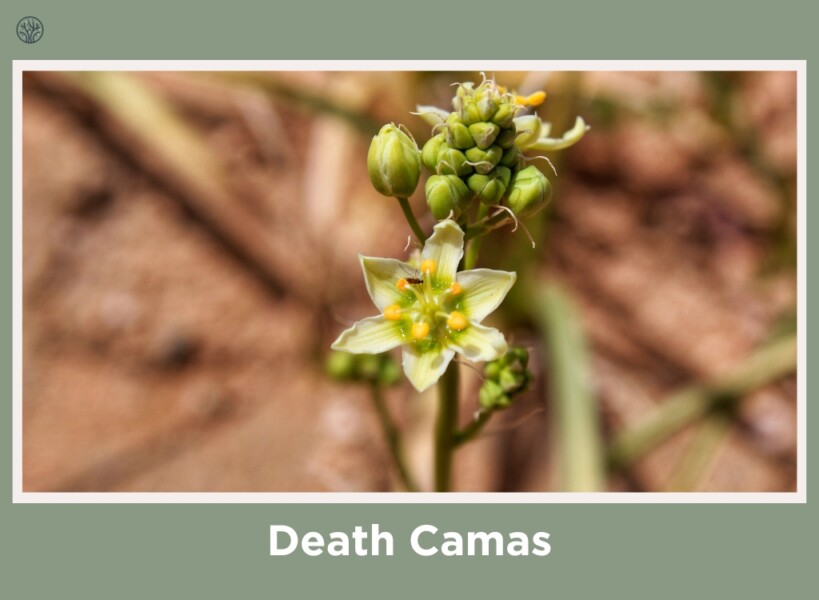
- Identification: The Death Camas plant has small, star-shaped white or cream flowers, which grow in clusters at the top of a long stem. The leaves are long, thin, and grass-like, emanating from the base of the plant.
- Habitat: This plant grows in meadows, grasslands, and open forests across California.
- Toxic Parts: All parts of the Death Camas plant are toxic, but the bulbs are the most dangerous. They contain zygacine and other alkaloids that are highly toxic.
- Symptoms: Symptoms of Death Camas poisoning can include nausea, vomiting, abdominal pain, and dizziness. In severe cases, it can lead to low blood pressure, slow heart rate, respiratory distress, coma, and even death. The symptoms usually appear within a few hours of ingestion.
- First Aid: If someone has ingested any part of the Death Camas plant, it is critical to seek emergency medical help immediately. If breathing becomes difficult, begin CPR if trained to do so.
3. Cherry Laurel (Prunus laurocerasus)
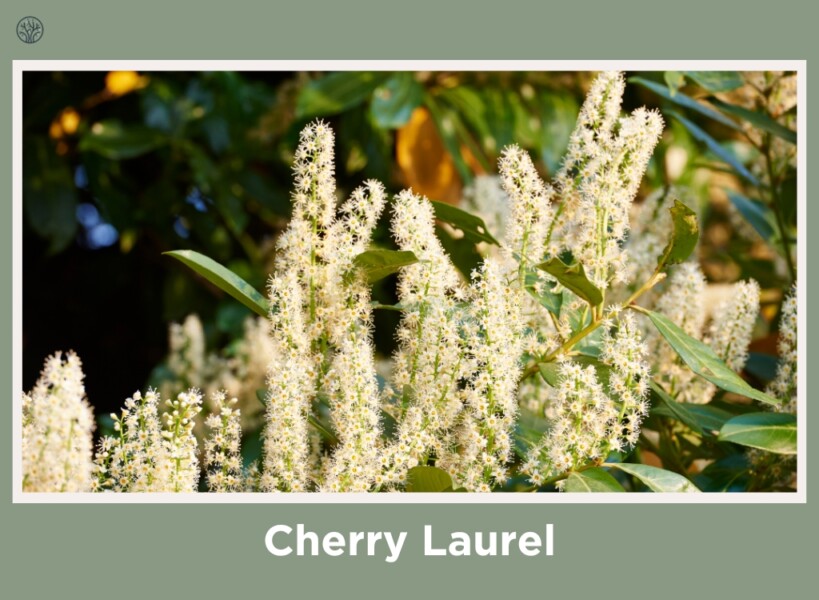
- Identification: Cherry Laurel has dense, glossy, dark green leaves, which are similar in shape to bay leaves but larger. In spring, it produces clusters of small, fragrant white flowers, followed by dark berries in the summer and fall. The plant can grow as a large shrub or small tree and is often used for hedging due to its dense foliage.
- Habitat: This plant grows in urban and suburban areas of California, especially in landscaped gardens, parks, and along roadsides.
- Toxic Parts: All parts of the California Cherry Laurel are poisonous, with the leaves and seeds of the plants being particularly dangerous. The plant produces hydrogen cyanide when its leaves or seeds are crushed or chewed.
- Symptoms: Symptoms of Cherry Laurel poisoning can include difficulty breathing, weakness, confusion, dizziness, headache, and nausea. In severe cases, it can lead to convulsions, respiratory failure, and even death due to cyanide poisoning.
- First Aid: If contact with or ingestion of any part of the Cherry Laurel occurs, seek immediate medical attention. Remove any remnants of the plant from the mouth and rinse the area thoroughly.
4. Firestick Plant (Euphorbia tirucalli)
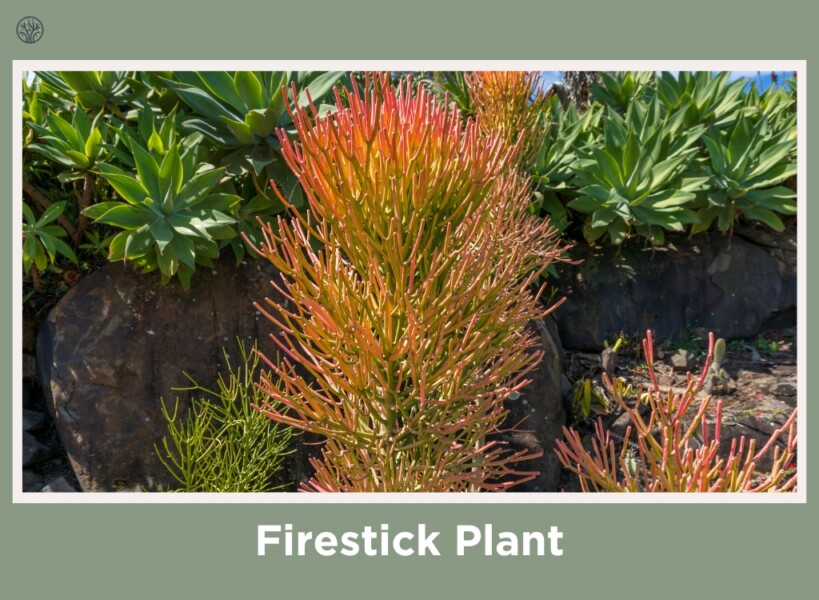
- Identification: The Firestick Plant is easily recognizable by its thin, stick-like branches that lack noticeable leaves. These branches are green but turn to shades of red, orange, or yellow when exposed to bright sunlight. The plant can grow quite tall, often reaching several feet in height.
- Habitat: This succulent can only grow in sunny, dry areas of California, unlike other types of cacti that can survive the frost.
- Toxic Parts: The most poisonous part of the California Firestick Plants is their sap. This milky white sap is present in all parts of the plant.
- Symptoms: Contact with the sap can cause skin irritation, redness, swelling, and blistering. If the sap gets into the eyes, it can lead to severe pain and temporary blindness. Ingestion of the plant can cause irritation to the mouth and throat, nausea, vomiting, and diarrhea.
- First Aid: If skin contact occurs, immediately wash the affected area with soap and water to remove the sap. If the sap gets into the eyes, rinse the eyes with plenty of clean water for several minutes and seek medical attention. In case of ingestion, do not induce vomiting; instead, rinse the mouth thoroughly and seek medical help.
5. Jimsonweed (Datura stramonium)
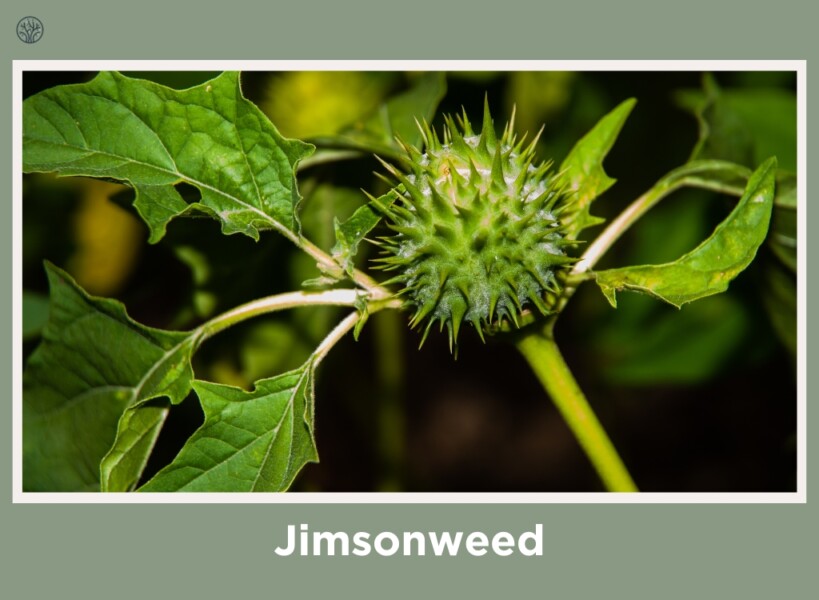
- Identification: Jimsonweed stands out with its large, white to purplish trumpet-shaped flowers, which bloom at night and close during the day. The plant has a bushy appearance, with large, coarsely toothed leaves. Its seed pods are ball-shaped, covered in spikes, and split open when ripe, releasing numerous small black seeds.
- Habitat: Commonly grows in temperate regions across California, these poisonous plants thrive in disturbed areas such as along roadsides, in agricultural fields, and in overgrown gardens.
- Toxic Parts: All parts of the Jimsonweed plant are toxic, with the seeds and leaves containing the highest concentration of dangerous alkaloids such as scopolamine and atropine.
- Symptoms: Symptoms of Jimsonweed poisoning can vary but often include dry mouth, blurred vision, hallucinations, rapid heartbeat, fever, and in severe cases, seizures and coma. The effects can be unpredictable and may lead to dangerous behavior or accidents.
- First Aid: If someone comes into contact with or ingests any part of the Jimsonweed plant, it is critical to seek immediate medical attention. Before help arrives, keep the person calm and safe, and monitor their symptoms closely.
6. Poison Hemlock (Conium maculatum)
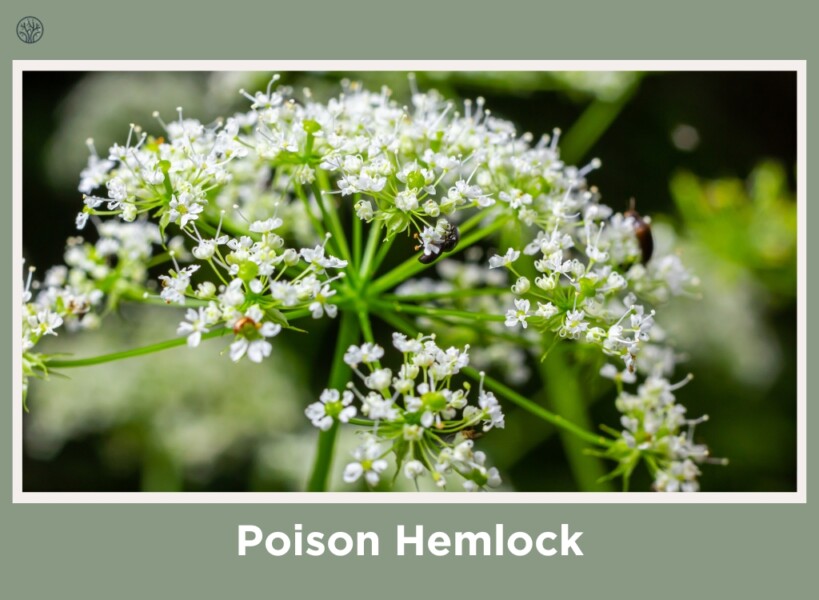
- Identification: Poison Hemlock has a tall stature, reaching up to 8 feet in height, with hollow, green stems that are often spotted or streaked with purple. It has finely divided, lacy leaves resembling carrots or parsley and produces small white flowers arranged in umbrella-like clusters.
- Habitat: This plant grows in moist, nutrient-rich environments such as stream banks, ditches, and the edges of cultivated fields.
- Toxic Parts: Every part of the Poison Hemlock plant is toxic, including the leaves, stems, flowers, and seeds. The roots are particularly poisonous.
- Symptoms: Symptoms of Poison Hemlock poisoning can appear quickly and include nausea, vomiting, abdominal pain, tremors, dilated pupils, rapid heartbeat, and severe muscular weakness. In high doses, it can lead to respiratory failure and death.
- First Aid: Immediate medical attention is crucial in cases of Poison Hemlock exposure. If breathing stops, begin CPR if trained to do so.
7. Oleander (Nerium oleander)

- Identification: Oleander is easily identifiable by its narrow, dark green leaves, which grow in pairs or whorls along the stem. The plant has beautiful, funnel-shaped flowers that bloom in shades of pink, red, white, or yellow. Oleander typically grows as a dense shrub or small tree, reaching heights of up to 20 feet.
- Habitat: These poisonous plants grow in residential and commercial landscapes across California.
- Toxic Parts: All parts of the oleander plant are toxic, including leaves, flowers, stems, and roots. The plant’s sap can also cause skin irritation and allergic reactions.
- Symptoms: Ingestion of oleander can lead to a range of symptoms, including nausea, vomiting, diarrhea, weakness, dizziness, and an irregular heartbeat. In severe cases, it can cause serious heart-related issues, seizures, and even death.
- First Aid: If someone ingests any part of an oleander plant or comes into contact with its sap, it’s crucial to seek immediate medical attention. Rinse the mouth or skin thoroughly to remove any plant residue.
8. Fool’s Parsley (Aethusa cynapium)
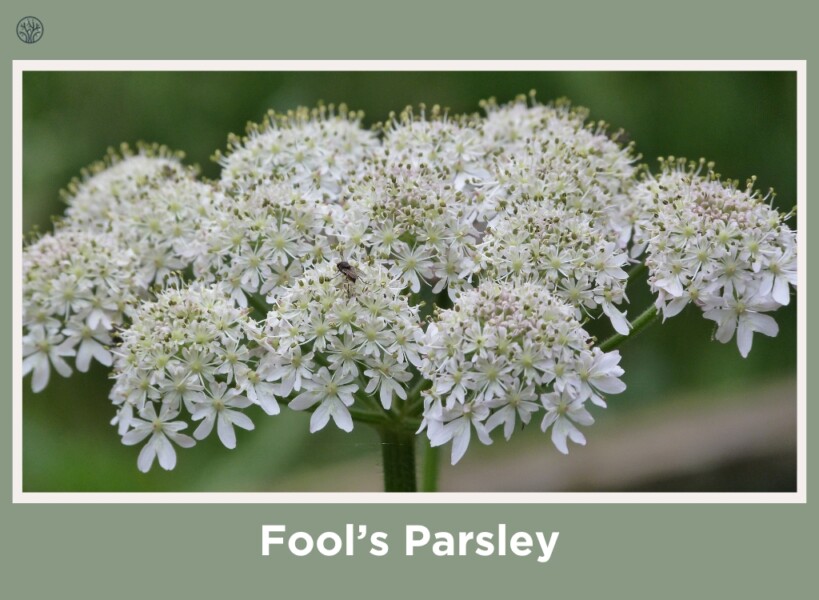
- Identification: Fool’s Parsley has bright green, finely divided leaves that closely resemble those of garden parsley. It bears small, white flowers arranged in umbrella-like clusters, similar to other members of the carrot family. Fool’s Parsley is not a good-smelling tree due to its unpleasant, musty smell.
- Habitat: This plant grows in disturbed areas such as roadsides, fields, and gardens.
- Toxic Parts: All parts of Fool’s Parsley are toxic, with the highest concentration of toxins present in the seeds and roots. The plant contains several toxic compounds, including aethusin and coniine.
- Symptoms: Ingestion of Fool’s Parsley can lead to symptoms such as dizziness, nausea, vomiting, abdominal pain, and convulsions. In severe cases, it can cause respiratory failure and death.
- First Aid: If ingestion of Fool’s Parsley is suspected, seek medical attention immediately. Do not induce vomiting unless directed by a healthcare professional. Before help arrives, keep the person calm and monitor their condition, especially their breathing and heart rate.
9. English Yew (Taxus baccata)
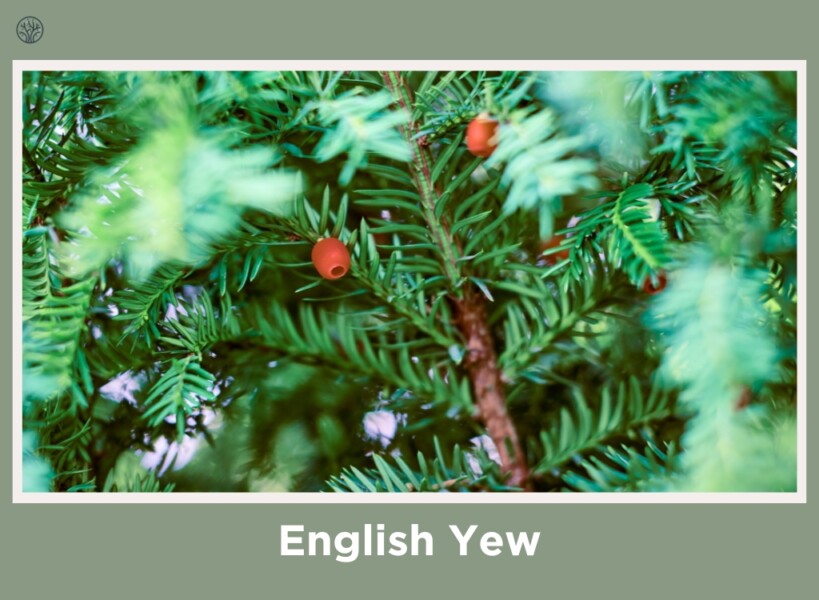
- Identification: The English Yew is identifiable by its dense, dark green needles and reddish-brown bark. It often grows as a large shrub or small to medium-sized tree. The tree produces small flowers and bright red berries, each containing a single, toxic seed. The berries are soft and cup-shaped, known as arils, and are the only part of the tree that is not toxic.
- Habitat: These poisonous plants are not common in the wild in California, they often grow in landscaped areas, such as parks, gardens, and cemeteries.
- Toxic Parts: Nearly all parts of the English Yew are toxic, including the leaves, bark, wood, and seeds. The toxins, primarily taxine alkaloids, are present throughout the year in all parts of the tree.
- Symptoms: Symptoms of English Yew poisoning can include dizziness, dry mouth, dilated pupils, abdominal pain, difficulty breathing, and a rapid or irregular heartbeat. In severe cases, it can lead to cardiac arrest and death.
- First Aid: In the event of suspected ingestion of any part of the English Yew, it is critical to seek emergency medical help immediately.
10. Angel’s Trumpet (Brugmansia)
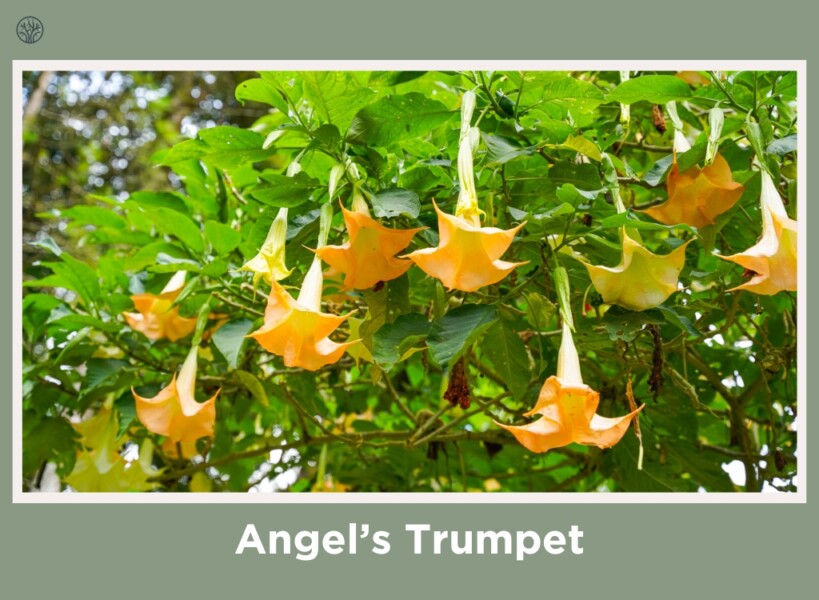
- Identification: The Angel’s Trumpet has large, pendulous flowers, which can be up to 20 inches long. These flowers come in a variety of colors, including white, yellow, pink, and orange. The plant has large, oval-shaped leaves and can grow as a shrub or small tree. It’s particularly noted for its strong, sweet scent in the evenings.
- Habitat: This plant is commonly cultivated in home gardens and public spaces throughout California.
- Toxic Parts: All parts of the California Angel’s Trumpet plants are poisonous, with the seeds and leaves being particularly high in alkaloids such as scopolamine, hyoscyamine, and atropine.
- Symptoms: Symptoms of poisoning from Angel’s Trumpet include dry mouth, blurred vision, hallucinations, confusion, and difficulty urinating. Severe cases can lead to increased heart rate, fever, seizures, and potentially death.
- First Aid: If there is any contact with or ingestion of Angel’s Trumpet, it is imperative to seek immediate medical attention. If the skin or eyes have come into contact with the plant, rinse thoroughly with water.
11. Death Cap (Amanita phalloides)
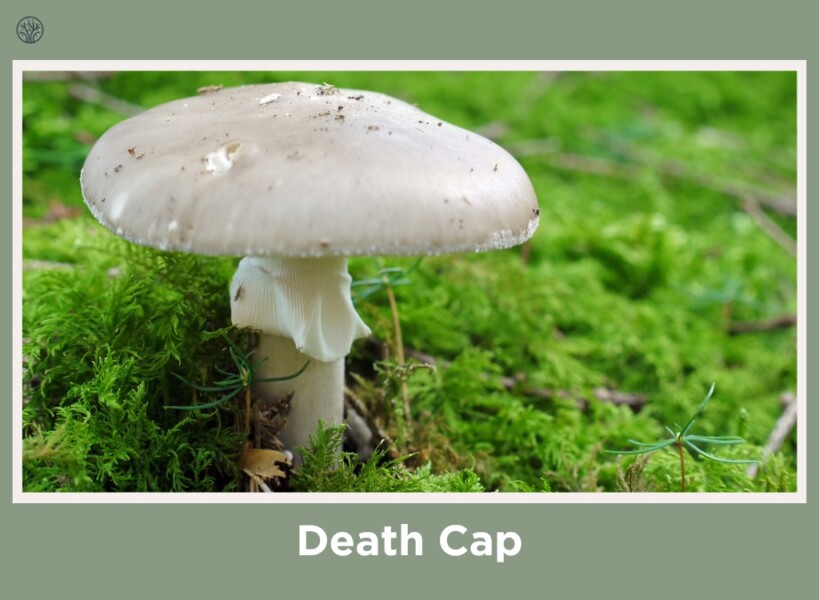
- Identification: The Death Cap mushroom typically has a cap that ranges from greenish to yellowish in color, with a smooth, shiny surface. It can also appear white or brown, making identification challenging. The cap is usually 2 to 6 inches wide and has white gills underneath. A key identifying feature is the white, sack-like volva at the base of the stem and the skirt-like ring around the stem.
- Habitat: This mushroom grows in wooded areas, particularly under oak trees, but can also grow alongside other hardwoods and conifers.
- Toxic Parts: All parts of the Death Cap mushroom are extremely poisonous, containing potent toxins such as amatoxins.
- Symptoms: Symptoms of Death Cap poisoning often appear 6 to 24 hours after ingestion and include severe abdominal pain, vomiting, and diarrhea, leading to dehydration and electrolyte imbalances. Later stages can involve liver and kidney failure.
- First Aid: Immediate medical attention is critical in cases of Death Cap ingestion. Activated charcoal may be administered to absorb the toxins. Hospitalization is usually required for intensive care and monitoring.
12. Dumb Cane (Dieffenbachia)
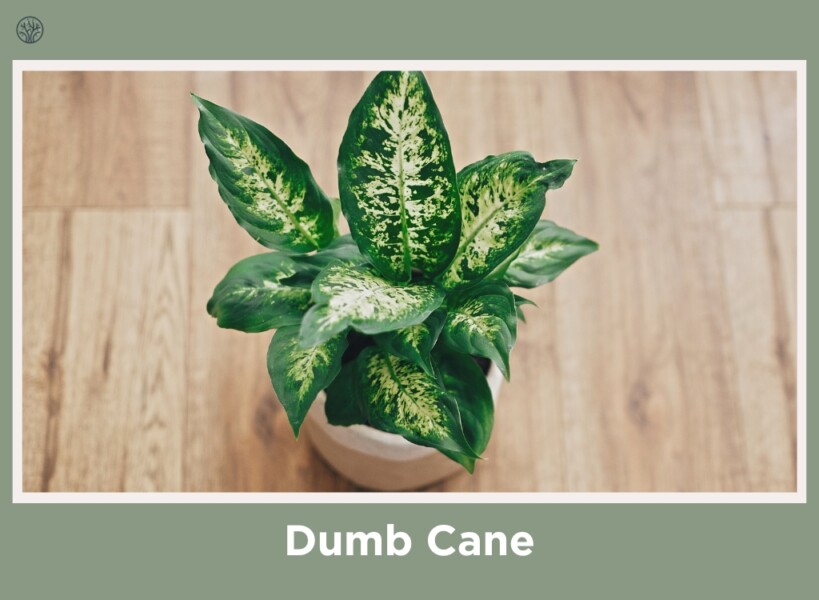
- Identification: Dumb cane has large, broad leaves that are variegated with white, cream, or yellow patterns. The plant can grow quite tall, often reaching several feet.
- Habitat: This is a famous decorative houseplant in California.
- Toxic Parts: All parts of the dumb cane plant are toxic, but the leaves contain the highest concentration of calcium oxalate crystals.
- Symptoms: Contact with the plant’s sap can cause burning and swelling of the lips, mouth, and throat, difficulty swallowing, and temporary loss of speech. Ingestion can lead to more severe symptoms, including intense oral irritation, drooling, nausea, vomiting, and difficulty breathing.
- First Aid: If contact with a dumb cane occurs, rinse the affected area with water immediately. If ingested, do not induce vomiting; instead, rinse the mouth with water and seek medical attention.
13. Poison Oak (Toxicodendron diversiloba)
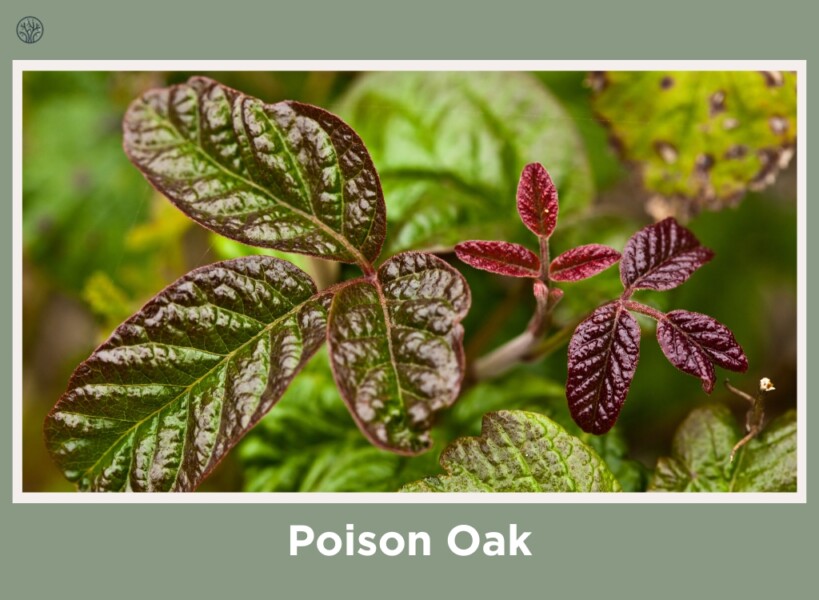
- Identification: Poison Oak is a type of oak tree that has distinctive leaves, which grow in clusters of three leaflets. The leaves are green in spring and summer, turning red or orange in the fall. They have a shiny surface and can be either lobed or toothed, resembling oak leaves.
- Habitat: This plant grows in wooded areas, chaparral, and coastal sage scrub throughout California.
- Toxic Parts: All parts of the Poison Oak plant contain urushiol, an oily resin that is responsible for the allergic reaction.
- Symptoms: Contact with Poison Oak can cause an itchy, blistering rash that typically appears within 12 to 72 hours after exposure. The rash can last for several weeks and may be accompanied by swelling, redness, and difficulty breathing if inhaled.
- First Aid: If you come into contact with Poison Oak, wash the affected area with soap and water as soon as possible to remove the urushiol. Avoid scratching the rash, as this can cause infection. Over-the-counter creams and antihistamines can help alleviate the itching and swelling. If the reaction is severe or if there is difficulty breathing, seek medical attention immediately.
14. Stinging Nettle (Urtica dioica)
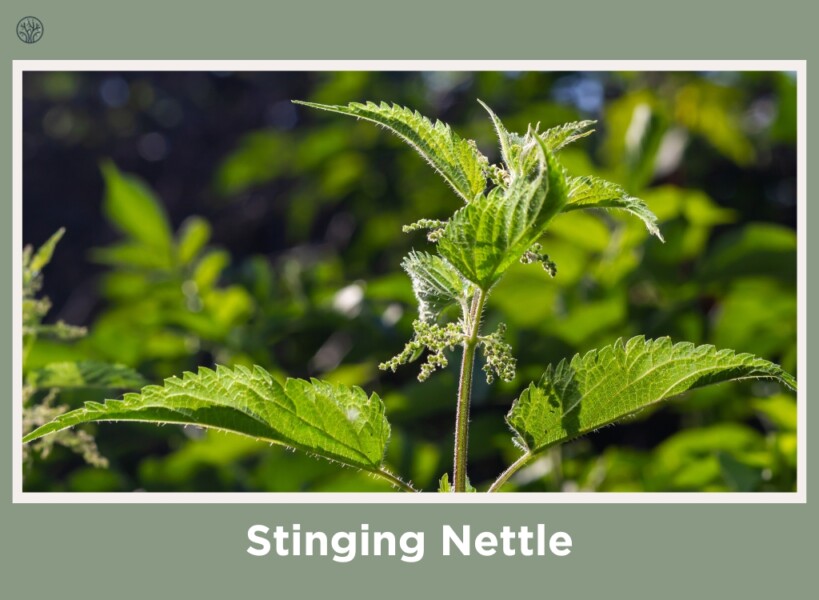
- Identification: Stinging Nettle has heart-shaped, serrated leaves and small, greenish or white flowers. The leaves and stems are hairy. The plant typically grows between 2 to 4 feet.
- Habitat: This plant grows along streams, rivers, and in wooded areas. It also grows in disturbed sites, such as along trails and the edges of fields in California.
- Toxic Parts: The primary concern with Stinging Nettle is the fine hairs on its leaves and stems. These hairs contain irritants that cause a stinging sensation upon contact with the skin.
- Symptoms: Contact with Stinging Nettle results in a sharp, burning sensation, followed by redness and itching. The affected area may also develop a rash or hives. Symptoms usually last for a few hours but can persist for up to a day.
- First Aid: If you come into contact with Stinging Nettle, avoid touching or scratching the affected area. Wash the area with soap and water to remove any plant particles. Applying a cold compress can help reduce swelling and pain. Over-the-counter antihistamines or hydrocortisone cream may also alleviate itching and discomfort. If symptoms persist or worsen, seek medical attention.
15. Tobacco (Nicotiana)

- Identification: Tobacco plants have large, green leaves and tubular flowers, which range in color from pink to red or white. The leaves are typically hairy and sticky to the touch. The plant can grow quite tall, often reaching several feet.
- Habitat: Tobacco is versatile and grows in a variety of environments in California, from cultivated fields to wild areas.
- Toxic Parts: All parts of the tobacco plant are toxic due to the presence of nicotine. The leaves, in particular, contain high concentrations of this substance.
- Symptoms: Ingestion or prolonged skin contact with tobacco leaves can lead to nicotine poisoning. Symptoms include nausea, vomiting, dizziness, increased salivation, abdominal pain, and in severe cases, seizures, respiratory failure, or cardiac arrest.
- First Aid: If there is accidental ingestion or skin contact with tobacco, it’s crucial to seek medical attention immediately. Rinse the skin thoroughly if it has come into contact with the plant. Do not induce vomiting unless directed by a healthcare professional. Before help arrives, monitor the person’s condition and keep them calm.
About Plant Poisoning
Plant poisoning is a significant concern, especially in regions like California where a diverse range of poisonous plants thrive. Understanding the symptoms and prevention methods is crucial for ensuring safety in both natural and landscaped environments.
Symptoms Of Plant Poisoning
- Gastrointestinal Distress: This includes symptoms like nausea, vomiting, diarrhea, and abdominal pain, which are common in many cases of plant poisoning.
- Dermatological Reactions: Contact with certain plants can cause skin irritation, rashes, blistering, or itching.
- Neurological Symptoms: These may include headaches, dizziness, confusion, hallucinations, or seizures, indicating more severe poisoning.
- Respiratory Issues: Difficulty breathing, wheezing, or coughing can occur, especially if plant parts are inhaled or if the poison affects the respiratory system.
- Cardiac Symptoms: Some plant toxins can affect the heart, leading to symptoms like irregular heartbeat, palpitations, or in extreme cases, cardiac arrest.
- Systemic Reactions: In some cases, plant poisoning can cause a range of systemic symptoms, including fever, sweating, weakness, or changes in blood pressure.
How To Prevent Accidental Plant Poisoning
- Knowledge and Identification: Learn to identify common poisonous plants in your area. Understanding what these plants look like and where they are typically found can help avoid accidental contact or ingestion.
- Gardening and Landscaping Choices: Be cautious when selecting plants for your garden or landscape, especially if you have children or pets. Opt for non-toxic varieties when possible.
- Supervision of Children and Pets: Always supervise children and pets when they are in areas where poisonous plants may be present. Teach children not to touch or ingest unknown plants.
- Use Protective Gear: When handling plants, especially those known to be toxic, use gloves and other protective gear to prevent skin contact.
- Avoid Foraging Without Expertise: Do not forage for wild plants unless you are experienced and absolutely sure of their safety. Many poisonous plants closely resemble edible ones.
- Emergency Preparedness: Keep emergency contact numbers handy and know the basics of first aid for plant poisoning. This can be crucial in providing immediate care before professional medical help arrives.
When visiting California, you should be aware of these poisonous plants, and take proactive steps to reduce the chances of plant poisoning.
FAQs
What is the poisonous white flower in California?
One of the most poisonous white flowers in California is the Oleander (Nerium oleander). This attractive shrub or small tree is commonly found in landscapes and gardens throughout the state. Its white flowers (which can also be pink or red) are beautiful but highly toxic. Every part of the Oleander plant contains toxins that can be lethal if ingested and can cause skin irritation upon contact.
What plants are poisonous in San Diego?
Some poisonous plants in San Diego:
Poison Oak: The entire plant contains urushiol, an oily resin that can cause allergic skin reactions upon contact.
Poison Sumac: Similar to poison oak, all parts of poison sumac, especially the sap, contain urushiol.
Poison Ivy: Similar to poison oak and sumac, poison ivy also contains urushiol.Are there poisonous berries in California?
Yes, California has several plants with poisonous berries. These include:
– English Yew (Taxus baccata): Known for its small, red berries which are toxic.
– Deadly Nightshade (Atropa belladonna): Produces shiny black berries that are highly poisonous.
– Holly (Ilex spp.): Commonly used in decorations, its red berries can be toxic if ingested in large quantities.How to identify poisonous plants in California?
Identifying poisonous plants in California involves a few key steps:
– Learn the characteristics of common poisonous plants in the area (leaf shape, flower color, growth habits).
– Use field guides or mobile apps dedicated to plant identification.
– Pay attention to warning signs in public parks and hiking trails.
– When in doubt, avoid touching or ingesting unknown plants.
– Consider attending local workshops or courses on plant identification and safety.
– Being informed and cautious can help you safely enjoy the natural beauty of California while avoiding the risks associated with its poisonous plants.

